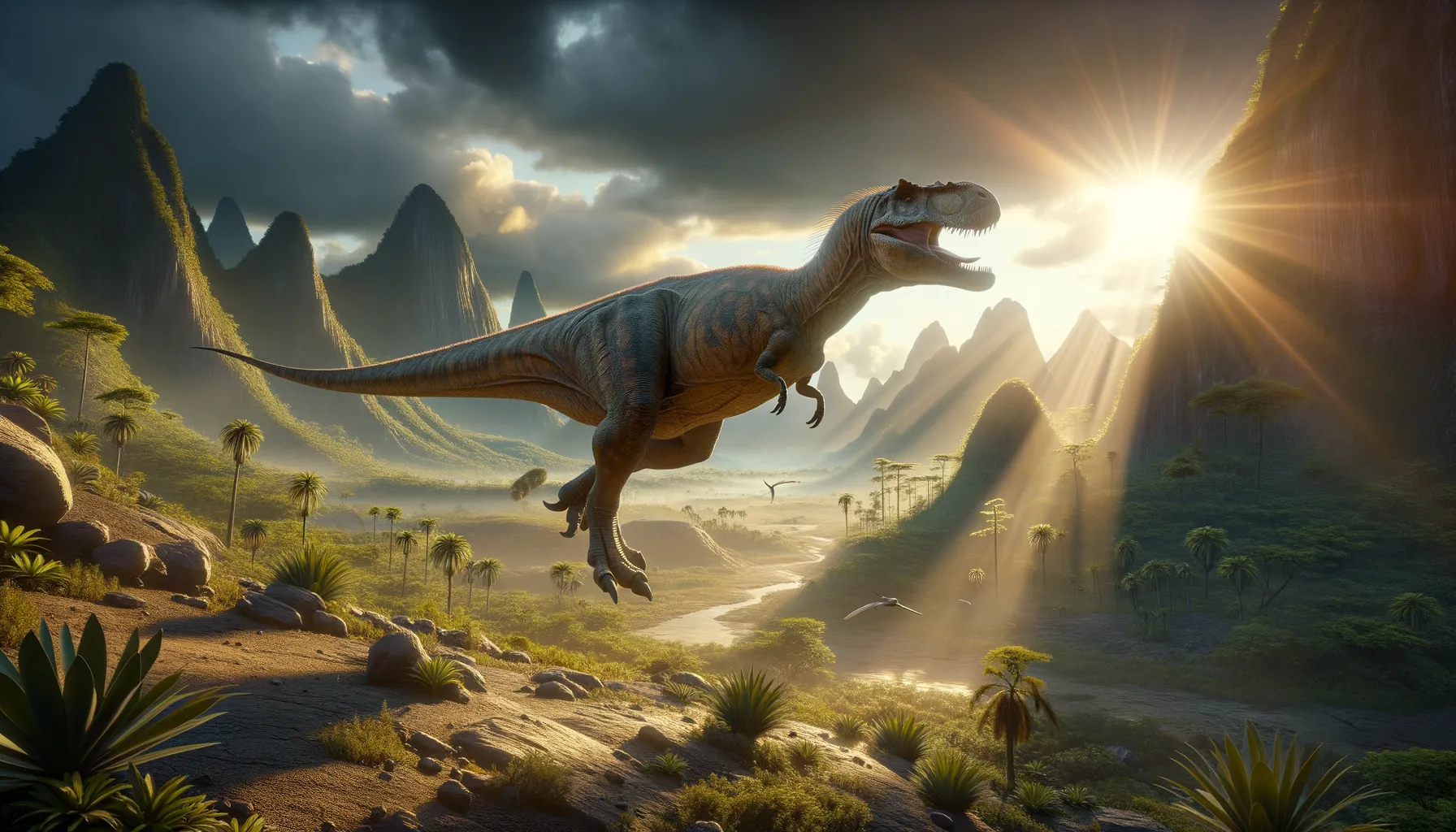
Yunmenglong
Ancient giant of the Asian Cretaceous plains.
Period
Cretaceous
Length
About 9 meters in length.
Height
Roughly 3 meters tall at the hips.
Weight
Approximately 1,300 kilograms.
Yunmenglong was a large, ground-dwelling dinosaur from the Cretaceous period. Its fossils were first discovered in China, revealing its significant size. The dinosaur had moderate speed, which likely helped it evade predators while sustaining its herbivorous diet. Yunmenglong provides a fascinating glimpse into the diversity of dinosaurs that roamed Asia during this era, and its study helps paleontologists understand the evolutionary trajectory of large dinosaurs.
Diet
Yunmenglong was herbivorous, feeding primarily on the abundant vegetation of its time. It likely consumed leaves, branches, and perhaps fruits, which would have been plentiful during the Cretaceous period.
Hunting
Being herbivorous, Yunmenglong did not hunt. Instead, it grazed and foraged across the landscape, using its size to reach various plant materials. It may have used its moderate speed to move between feeding grounds and evade predators.
Environmental challenges
Throughout its life, Yunmenglong faced challenges such as changing climates and shifting ecosystems. These changes influenced its food availability and required adaptation to new environments. Large predators also posed threats, requiring constant vigilance. Seasonal variations likely influenced its migratory patterns, compelling it to move in search of food and water.
Speed
Moderate speed, not built for fast pursuits.
Lifespan
Estimated to live several decades.
First discovery
Discovered in China in 2013.
Fun Facts
- Yunmenglong was a giant dinosaur that lived during the Early Cretaceous period, roughly 125 million years ago.
- The name 'Yunmenglong' means 'cloud dream dragon', which reflects the region in China where its fossils were discovered.
- Yunmenglong was a sauropod, which means it belonged to a group of long-necked, plant-eating dinosaurs.
- This dinosaur had a distinct trait of having longer neck vertebrae compared to other sauropods of its time.
- Yunmenglong is known from a fossil find that includes partial vertebrae and is estimated to have been quite large, although its exact size is still studied.
- The discovery of Yunmenglong helps paleontologists understand the diversity and evolution of sauropods in the Cretaceous period.
Growth and Development
Yunmenglong underwent significant growth from a young age, developing large skeletal structures indicative of its eventual size. It likely experienced rapid growth spurts during the early stages of life. Its development was influenced by diet, genetics, and environmental conditions. As with many dinosaurs, its large size may have provided advantages in defense and in regulating body temperature.
Habitat
Yunmenglong lived in a variety of environments, including forests, plains, and near water bodies where vegetation was abundant. Its presence in these areas suggests it adapted to a wide range of climatic conditions. The diverse habitats offered ample food resources, essential for its large size. Proximity to water sources would have been crucial for its survival, supporting both sustenance and migratory patterns.
Interaction with other species
Yunmenglong likely interacted with various dinosaur species, both herbivorous and carnivorous. Its presence in mixed-species environments may have led to competition for food with other herbivores. Predatory species would have seen Yunmenglong as potential prey, despite its size. These interactions played a role in its behavior and survival strategies throughout its existence.
Natural lifespan
Yunmenglong could have lived for several decades, given its size and environmental conditions.
Reproduction
Yunmenglong likely reproduced through egg laying, as is common among dinosaurs. Its reproductive behavior may have involved nesting in secure locations to protect the young. Parental care is a possibility, though direct evidence is limited. Young Yunmenglong would have been vulnerable to predation, necessitating protective strategies.
Social behaviour
Yunmenglong may have displayed some social behavior, possibly living in groups for mutual protection and increased foraging efficiency. Group living could have offered advantages in predator detection and potential cooperative care of young. Social structures, if they existed, would have been influenced by environmental availability of resources.
Fossil locations
Fossils of Yunmenglong have been primarily found in China, providing a window into the Cretaceous ecosystem in this region. The discovery of its fossils adds to the understanding of dinosaur distribution in Asia. Future excavations may yield additional findings that further illuminate its presence across different areas. These sites are crucial for deepening the understanding of the Cretaceous period in eastern Asia.
